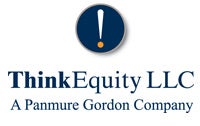 Among “Street” analysts, the team of Bill Morrison and Robert Coolbrith at ThinkEquity are alone in their thoughtful understanding of the opportunity in online display advertising – and it’s not just due to the recent bloodletting on Wall Street.
Among “Street” analysts, the team of Bill Morrison and Robert Coolbrith at ThinkEquity are alone in their thoughtful understanding of the opportunity in online display advertising – and it’s not just due to the recent bloodletting on Wall Street.
Today’s release of their thorough industry report entitled, “The Opportunity In Non-Premium Display Advertising,” is no surprise.
While certain market segments have underperformed our initial expectations, we believe that non-premium display is likely to remain the highest-growth segment of online media over the next five years, with the greatest potential to create significant opportunities and market dislocations.
In fact, we’d suggest that premium display emerges from the non-premium as insight through data reveals hidden value in the remnant display marketplace. Either way you slice it, a boatload of opportunity awaits.
Among many points, ThinkEquity (TE) identifies the growing competition between media buying agencies and ad networks. Falling short of calling for disintermediation of either entity, TE recognizes that agencies are starting to aggregate inventory with their own trading desks. The only quibble we have here is that agencies and networks are really focusing on aggregating audience first, not inventory.
Ad agencies are becoming increasingly competitive with ad networks, through the creation of “private” ad networks, integration with major ad exchange platforms, or the development of wholly new ad technology platforms built atop the DoubleClick and Right Media ad servers, etc. Examples of major agency initiatives include WPP’s B3, Publicis’ Vivaki, and Havas’ Adnetik. Increasingly, ad agencies appear interested in creating the ability to aggregate premium and non-premium display inventory in order to perform inventory allocation decisions in real time on the buy side. As ad exchanges commoditize the inventory aggregation function of ad networks, networks increasingly appear positioned as specialist media buyers or meta ad networks, either in cooperation or competition with ad agencies.
Towards the end of the report, yield optimization companies such as AdMeld, Rubicon Project and Pubmatic are detailed as TE suggests that their evolution in the online advertising space will continue – perhaps to that of an ad exchange offering demand-side (buyer) optimization.
While we believe that yield optimization platforms represent an important transitional step toward the non-premium spot advertising exchange model, we believe that ad exchanges should offer superior yield/revenue by placing inventory decisions in the hands of buyers, rather than publishers. In our view, limitations placed on buyer transparency or ability to make allocation decisions represents an externality, the cost of which is typically borne by the seller. While we do not believe that yield optimization platforms represent the endgame for the market, the firms behind these technologies could successfully transition toward the ad exchange model over time. We believe Pubmatic’s introduction of an API for networks represents an early step in that direction.
Over 140 pages long (about 100 of those pages are company profiles), we cannot say that we have fully digested the tome, yet. If you’d like a copy of the report, Bill asks that you contact him directly at: – wmorrison at thinkequity dot com.











